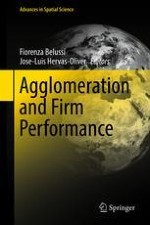2018 | OriginalPaper | Chapter
The Story of Cluster as a Cross-Boundary Concept: From Local Development to Management Studies
Authors : Annalisa Caloffi, Luciana Lazzeretti, Silvia Rita Sedita
Published in: Agglomeration and Firm Performance
Publisher: Springer International Publishing
Activate our intelligent search to find suitable subject content or patents.
Select sections of text to find matching patents with Artificial Intelligence. powered by
Select sections of text to find additional relevant content using AI-assisted search. powered by
